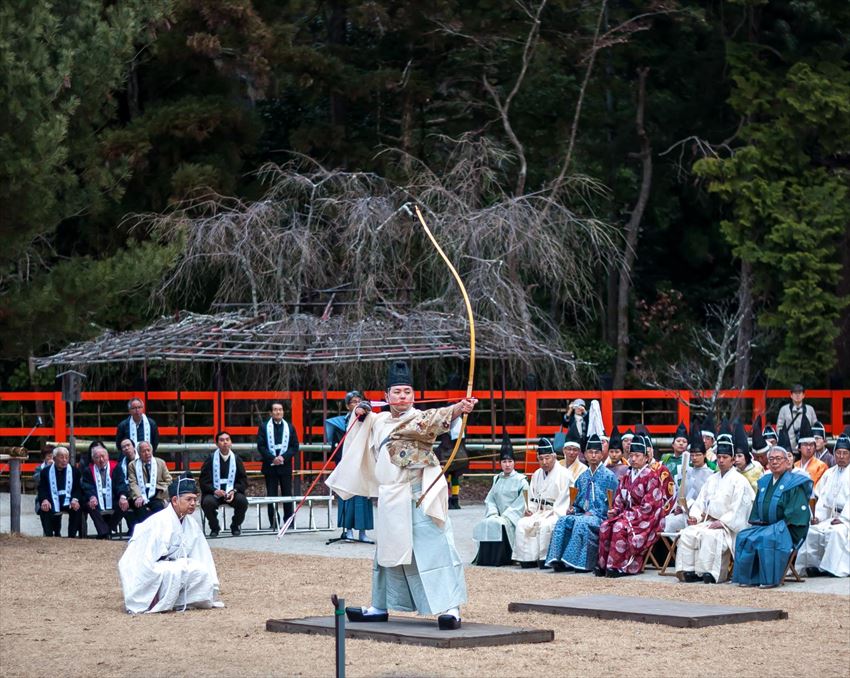The Manchu Bow & Manchu Archery The mighty Manchu bow, also called a Qing bow was one of the last bows of the Asiatic composite design and construction to... The post Manchu Bow appeared first on Archery Historian.
The Manchu Bow & Manchu Archery
The mighty Manchu bow, also called a Qing bow was one of the last bows of the Asiatic composite design and construction to be used as an official military weapon. Named after the people inhabiting the area of north-eastern China called Manchuria, the Manchu bow is widely recognized by traditional and historical archery enthusiasts by its impressive size (some are over 64 inches long when strung) and heavy draw weights (over 150 pounds in some cases). The following article delves into the specifics of the Manchu bow and Manchu archery.
 By https://wellcomeimages.org/indexplus/obf_images/3d/68/ea178ca1f997eb31dc320678f9e3.jpgGallery: https://wellcomeimages.org/indexplus/image/L0040987.htmlWellcome Collection gallery (2018-03-22): https://wellcomecollection.org/works/uhxx77j7 CC-BY-4.0, CC BY 4.0, https://commons.wikimedia.org/w/index.php?curid=36098464
By https://wellcomeimages.org/indexplus/obf_images/3d/68/ea178ca1f997eb31dc320678f9e3.jpgGallery: https://wellcomeimages.org/indexplus/image/L0040987.htmlWellcome Collection gallery (2018-03-22): https://wellcomecollection.org/works/uhxx77j7 CC-BY-4.0, CC BY 4.0, https://commons.wikimedia.org/w/index.php?curid=36098464
Manchuria & the Manchu People
Before exploring the Manchu bow and Manchu archery let us look at the Manchu people and the area in north-eastern China that bears their name, Manchuria.
The Manchu people have descended from a people known as the Jurchens. The Jurchens integrated sedentary agriculture with nomadic lifestyle aspects, namely husbandry and hunting. The earliest Jurchen peoples descended from the Donghu, an earlier tribal confederation that appears in historical records from the 7th century BCE. They appear to have been destroyed or assimilated by the Xiongnu, their warlike nomadic neighbors further west in about 150 BCE. [1]
The Jurchens
The Jurchens, an ethnic group primarily inhabiting the region known as Manchuria, displayed a remarkable understanding of the land and its resources, incorporating both agricultural and nomadic traditions into their way of life. Their farming practices and animal husbandry techniques played vital roles in sustaining their communities and shaping their cultural identity.
 By Unknown author – http://www.battle-of-qurman.com.cn/e/list.htm, Public Domain, https://commons.wikimedia.org/w/index.php?curid=12016445
By Unknown author – http://www.battle-of-qurman.com.cn/e/list.htm, Public Domain, https://commons.wikimedia.org/w/index.php?curid=12016445
In terms of agriculture, the Jurchens cultivated a variety of crops suited to the local climate and soil conditions. Millet, wheat, soybeans, and barley were among the principal crops they grew, providing essential staples for their sustenance. The Jurchens showcased ingenuity in adapting their farming techniques to the specific demands of the region, maximizing yields despite the challenging northern climate.
Their farming methods often involved a rotation system to maintain soil fertility. By alternating between cultivating different crops in a particular area, the Jurchens mitigated soil depletion and ensured the long-term viability of their farmland. This astute approach to agriculture highlights their knowledge of sustainable farming practices.
Jurchens & Animal Husbandry
Animal husbandry held significant importance in Jurchen society. Horses, in particular, held a central role in their nomadic lifestyle and warfare strategies. The Jurchens skillfully bred and trained horses to meet their specific needs, producing animals renowned for their strength, endurance, and agility. These well-adapted horses served as reliable companions in battle and facilitated swift and decisive mounted attacks, distinguishing the Jurchens on the battlefield.
Beyond horses, the Jurchens engaged in the husbandry of other livestock, including cattle, sheep, and pigs. Cattle provided milk, meat, and hides, while sheep offered wool for clothing and insulation in the harsh northern winters. Pigs, known for their versatility, supplied a valuable source of meat. The Jurchens skillfully managed their herds, allowing them to graze on the plentiful grasslands and benefit from the natural resources available.
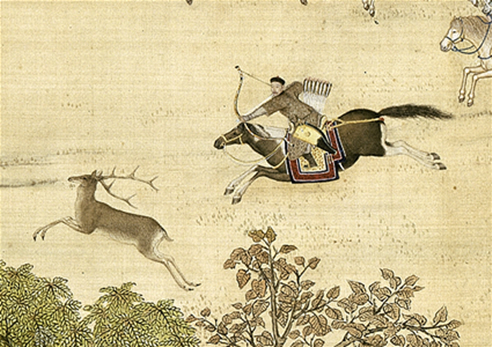 By Giuseppe Castiglione – http://www.guimet.fr/les-tres-riches-heures-de-la-cour,486, Public Domain, https://commons.wikimedia.org/w/index.php?curid=16059340
By Giuseppe Castiglione – http://www.guimet.fr/les-tres-riches-heures-de-la-cour,486, Public Domain, https://commons.wikimedia.org/w/index.php?curid=16059340
The symbiotic relationship between the Jurchens and the land is evident in their agricultural and animal husbandry practices. Their deep understanding of the environment enabled them to adapt and thrive, using the resources at their disposal to support their communities. By integrating farming and nomadic traditions, the Jurchens forged a unique cultural identity that harmonized with the diverse landscapes of northeastern China.
The Jin Dynasty
The Jurchens built an empire known as the Jin Dynasty, stretching across vast territories. They were resourceful and ingenious, developing clever ways to support themselves in their harsh surroundings. Hunting and fishing were essential for sustenance, and their ability to survive in the unforgiving wilderness earned them the admiration of many.
But it was their distinct style of warfare that truly set the Jurchens apart. Picture, if you will, a thunderous charge of mounted warriors, their banners fluttering in the wind, as they galloped across the open plains. The Jurchens were fierce horse archers, skilled in shooting arrows with deadly precision while riding at full speed. Their tactics were marked by lightning-fast hit-and-run attacks, striking fear into the hearts of their enemies.
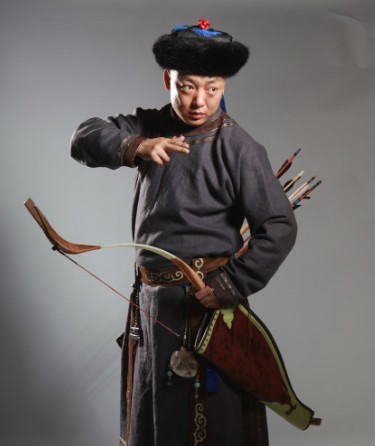 By Šolon – Own work, CC BY-SA 3.0, https://commons.wikimedia.org/w/index.php?curid=20373127
By Šolon – Own work, CC BY-SA 3.0, https://commons.wikimedia.org/w/index.php?curid=20373127
Jurchen Warriors
But there’s more to the Jurchens than their equestrian prowess. They were also clever strategists, capable of adapting to various battlefields. During sieges, they employed innovative techniques such as building catapults and scaling ladders to breach enemy fortifications. Their determination and cunning often turned the tide of war in their favor, earning them a well-deserved reputation as formidable opponents.
As time went on, the Jurchens’ empire faced challenges from neighboring powers, including the Mongols. In 1234, the Jin Dynasty fell, succumbing to the might of Genghis Khan’s Mongol Empire. The Jurchens, however, were not vanquished. They regrouped, retreated to the north, and eventually reemerged as the founders of the Later Jin Dynasty.
The Later Jin Dynasty, under the leadership of Emperor Wányán X?n?, marked a new chapter in Jurchen history. They adopted a more sedentary lifestyle, assimilating with the local Han Chinese culture and forging a unique blend of their own. This cultural fusion left a lasting impact on the region, shaping the course of history for generations to come.
Changing Times
The transition from the name “Jurchen” to “Manchu” marks an important historical development in the region of northeastern China. The change in nomenclature reflects a shift in identity and political dynamics, coinciding with the rise of the Qing Dynasty and its subsequent rule over China.
The term “Jurchen” originally referred to the ethnic group that inhabited the region known as Manchuria during the Jin Dynasty (1115-1234). However, with the fall of the Jin Dynasty and the subsequent emergence of the Later Jin Dynasty, the Jurchens gradually transformed their identity and assimilated with the local Han Chinese.
The defining moment in the name transition occurred during the early 17th century when the Jurchen leader Nurhaci unified various Jurchen tribes under his rule and established the Later Jin Dynasty, which later evolved into the Qing Dynasty. Nurhaci recognized the need for a new identity that would reflect the growing political power and aspirations of his people.
 By Philg88: Attribution Wikimedia Foundation, www.wikimedia.org – Own work Incorporates modified version of File:Empire of the Great Qing (orthographic projection).svg. Note that the map excludes Tawang from Tibet., CC BY 4.0, https://commons.wikimedia.org/w/index.php?curid=32457960
By Philg88: Attribution Wikimedia Foundation, www.wikimedia.org – Own work Incorporates modified version of File:Empire of the Great Qing (orthographic projection).svg. Note that the map excludes Tawang from Tibet., CC BY 4.0, https://commons.wikimedia.org/w/index.php?curid=32457960
From Jurchen to Manchu
In 1635, Nurhaci’s son, Hong Taiji, proclaimed the establishment of the Qing Dynasty, declaring himself the Emperor of the Great Qing. As part of his efforts to solidify the dynasty’s legitimacy and present a united front to the Chinese population, Hong Taiji made the decision to adopt a new ethnonym for the Jurchen people. The term “Manchu” was chosen as the new name, possibly derived from the Manchu word “manju,” which means “pure.”
The adoption of the name “Manchu” served multiple purposes. It signaled a break from the past, symbolizing the transformation of the Jurchens into a distinct ethnic and political entity. By embracing a new identity, the ruling elite aimed to create a sense of cohesion and reinforce their legitimacy as rulers of a multiethnic empire. Moreover, the name change was part of a larger strategy to consolidate control over China proper and project a more inclusive image to the Han Chinese population.
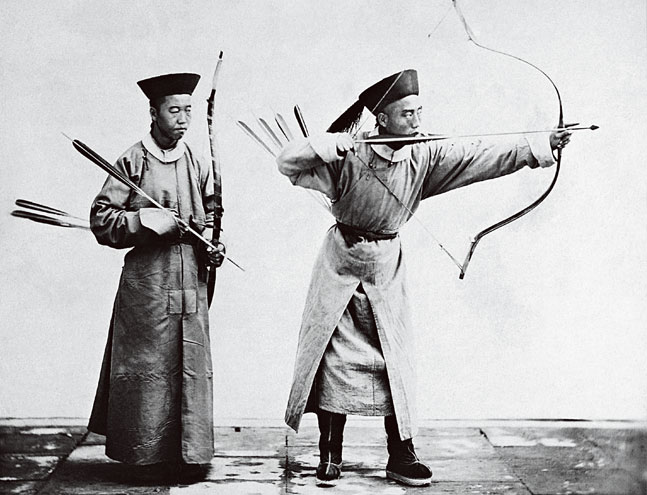
Over time, the term “Manchu” became synonymous with the ruling class of the Qing Dynasty. The term encompasses not only the Jurchen ethnic group but also other ethnic groups. This includes Mongols and Han Chinese who had joined the Manchu banners. This blending of different ethnicities under the umbrella of the Manchu identity further solidified the political and social fabric of the Qing Dynasty.
The Qing Dynasty was the last Imperial dynasty in China, lasting from 1644 to 1912.
The Manchus Today
Let us delve into the contemporary presence of the Manchu people, who form the largest branch of the Tungusic peoples. They are distributed throughout China, constituting the fourth largest ethnic group in the country.
The Manchu people, descendants of the historical Jurchen inhabitants of Manchuria, maintain a significant presence in modern-day China. The majority of Manchus reside in their traditional homeland of northeastern China. Specifically in the provinces of Liaoning, Jilin, and Heilongjiang. They can also be found in other parts of the country due to migration and urbanization.
With a population estimated in the millions, the Manchu people contribute to the rich ethnic diversity of China. They have preserved their distinct cultural heritage, which includes unique customs, traditions, language, and artistic expressions that reflect their historical roots and cultural identity.
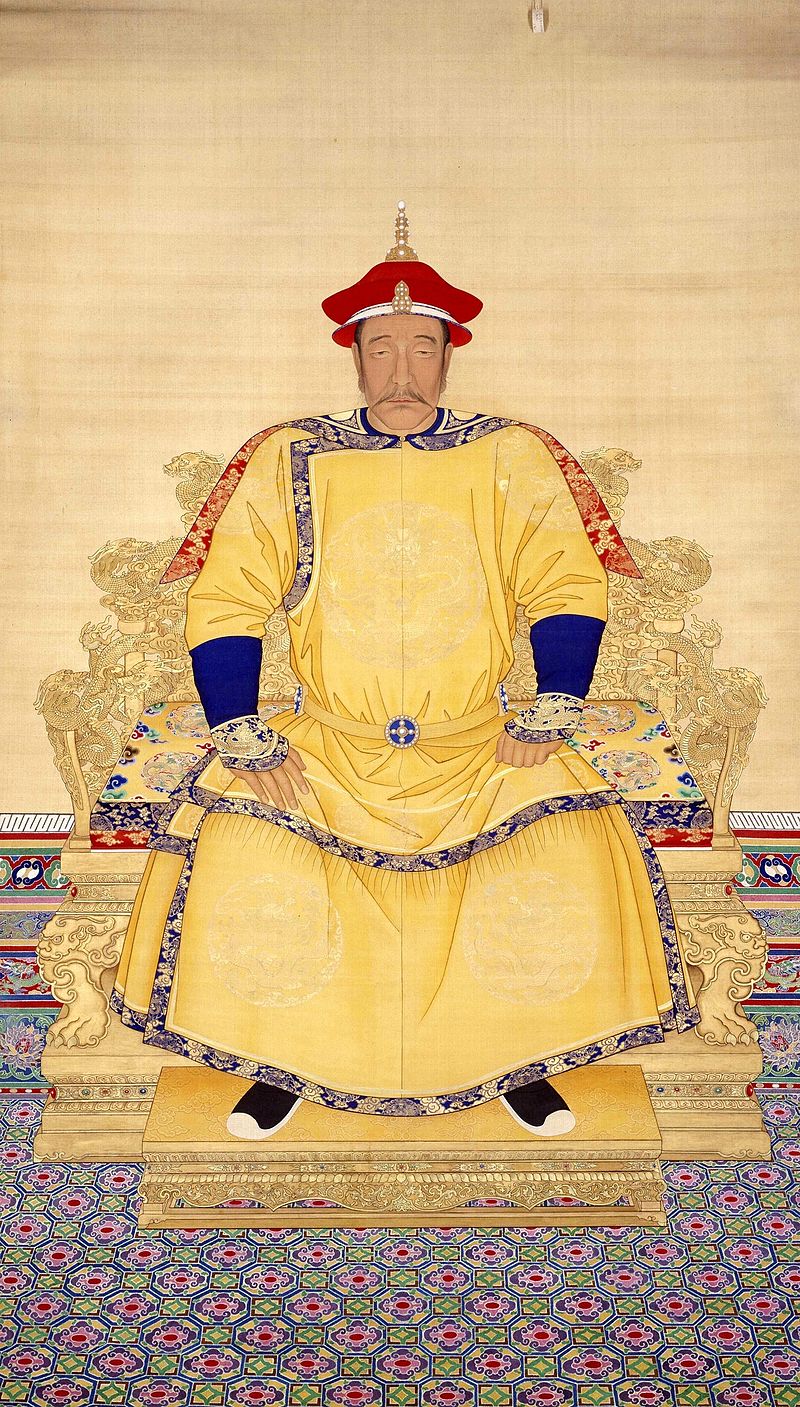 By Unknown author – Palace Museum, Beijing ???????, Public Domain, https://commons.wikimedia.org/w/index.php?curid=15178218
By Unknown author – Palace Museum, Beijing ???????, Public Domain, https://commons.wikimedia.org/w/index.php?curid=15178218
The Manchu Language
Language plays a crucial role in the preservation of Manchu cultural heritage. The Manchu language, belonging to the Tungusic language family, is distinct from Mandarin and other Chinese dialects. While Mandarin has become the predominant language for most Manchus, efforts are being made to revitalize and preserve the Manchu language as a means of connecting with their ancestral heritage.
The Manchu culture, influenced by both agricultural and nomadic traditions, is characterized by a blend of indigenous customs and Chinese cultural elements. Festivals and rituals hold special significance, providing occasions for the Manchu people to come together and celebrate their shared heritage. These celebrations often showcase traditional music, dance, costumes, and culinary delights. This offers glimpses into the cultural richness of the Manchu community.
 By MacCandy – Own work, CC BY-SA 4.0, https://commons.wikimedia.org/w/index.php?curid=45483403
By MacCandy – Own work, CC BY-SA 4.0, https://commons.wikimedia.org/w/index.php?curid=45483403
In contemporary society, many Manchus have integrated into various professional fields, including education, government, arts, and business. They actively contribute to the economic and social development of the regions where they reside. The Manchu identity and cultural practices continue to play a significant role in shaping their community’s collective consciousness.
The Chinese government recognizes the importance of preserving and promoting Manchu culture. Efforts have been made to support cultural initiatives, language revitalization programs, and educational opportunities. This is with the hope to foster a deeper understanding and appreciation of Manchu traditions and history. These endeavors aim to ensure the continuity and vitality of Manchu culture among younger generations.
The Manchu Bow & Qing Bow
Now that we have a better understanding of the Manchu people, let us examine their traditional bow. The Manchu or Qing bow (The Qing Dynasty: 1644 to 1912) is the most massive and largest of the Asiatic composite bows. The era of the Qing dynasty saw the introduction of firearms, and muskets began to play an ever-increasing role in battles. However, the Manchu bow still retained its prominent role in warfare.
In terms of function and utility, there is a spectrum on which traditional composite bows may be placed. On one far end, there are bows that were optimized to shoot an arrow as far as possible. Both these bows and arrows were relatively small and fast. The Turkish composite flight bow is the best example of one such bow.
On the other end of the spectrum are bows designed to impart as much kinetic energy to the arrow, and therefore into the target. The Manchu bow sits on this opposite extreme end. The power of Turkish bows was determined by how far they could shoot an arrow. The power of a Manchu bow was demonstrated by how much penetrative power it had at a relatively short distance.

As you can see from the above illustration, (The Composite Bow, Mike Loades, Drawing by Robert J. Molineaux) the Manchu bow has very large siyahs (rigid outermost section) which are set to a relatively extreme angle to the bending section of the bow. This allows for a very long draw, around 35 inches or so. Manchu archers can be seen in photographs drawing well past the ear to the shoulder. Another prominent feature is the string bridges which contact the string. They were typically made from wood or horn.
Manchu Bow Construction
Like all Asiatic composites, the main ingredients for Manchu bow construction are wood horn and sinew. Mulberry was much favored for the construction of the core. Bamboo was considered somewhat inferior.
At the heart of the Manchu bow lies a careful selection of materials, chosen for their strength, resilience, and ability to withstand the tremendous forces exerted upon them. The primary material employed in crafting this marvel is the composite of wood, horn, and sinew. The central core is hewn from a sturdy and flexible piece of wood (mulberry or similar). This resilient base provides the bow with the necessary flexibility to bend and store the immense energy required for its powerful shot.

Encasing the core is a layer of water buffalo horn, skillfully cut into thin strips. The horn adds compressive strength to the bow, allowing it to withstand the forces exerted during the drawing and release of the arrow. Each strip of horn is meticulously shaped and glued onto the wooden core, forming a continuous outer layer that encases the belly.
To further enhance the performance and resilience of the Manchu bow, sinew is employed as the next layer. Derived from the tendons of animals, sinew possesses remarkable tensile strength. The sinew is meticulously cleaned, dried, and then pounded into thin threads. These threads are laid onto the bow, in layers, and secured with a specialized glue made from fish bladder, heated animal hooves, and other secret additives known only to the skilled bowyers of the time.
Treatment & Tillering
Once the layers of horn and sinew are in place, the construction process takes a new direction. The bow is subjected to a process known as “heat-bending.” Expert bowyers, wielding their wisdom and experience, carefully heat the bow using radiant heat sources such as hot sand or steam. The application of heat softens the horn and sinew, allowing the bowyers to shape the bow’s graceful recurve profile. This phase demands utmost precision and intuition, as the bowyer must ensure that the limbs possess equal dimensions and symmetry.
 AF Archery
AF Archery
Following the heat-bending stage, the bow undergoes a meticulous process of tillering. This entails the careful removal of material from specific areas of the bow’s limbs, thereby adjusting its flexural characteristics. The bowyers, armed with a keen eye and the sharpest of tools, gradually shave off thin layers from strategic regions of the bow until its optimal performance is achieved. This harmonious balance between power and flexibility is the defining feature of the Manchu bow.
The Patience of Manchu Bowyers
The construction of a Manchu bow is a true labor of dedication, requiring exceptional craftsmanship and attention to detail. Skilled bowyers, often called “gongshi” or master craftsmen, dedicated years of their lives honing their skills to perfect the art of bow making. These revered artisans are held in high esteem within the society, their mastery acknowledged and respected by emperors, nobility, and warriors alike.
The time required to construct a Manchu bow varies depending on the skill level of the bowyer and the intricacy of the design. From the initial selection of materials to the final touches, a master bowyer may spend months, if not years, to complete a single bow. The process demands patience, a keen eye for detail, and an unwavering commitment to excellence.
A picture is worth a thousand words they say. Check out the video below for more on Manchu bow construction.
Manchu Military Examinations
Other than its large size and intimidating presence, the Manchu bow is also known for having a very high draw weight. There are some bows that were made and used solely for military training and examinations. These are known as “strength bows” or “numbered bows”. Many were numbered as a way to identify their approximate draw weights. A No. 1 bow is the heaviest and the draw weights descend as the number increases.
These bows were specifically crafted to test the physical prowess, skill, and stamina of individuals aspiring to serve in the military ranks of the Qing Empire. By wielding such a demanding weapon, one not only showcased their power and might but also demonstrated their discipline and fortitude in facing the challenges of warfare.
 AF Archery
AF Archery
However, what set the strength bows apart was their unique and exceptional draw weights. These bows were crafted with significantly heavier poundages compared to standard bows. Manchu bowyers were pushing the limits of human strength and endurance. The exact draw weights of these bows varied. However, it is said that they could range from 150 to 200 pounds or even higher.
To master the strength bow, individuals had to undergo extensive training, physical conditioning, and skill development. The archer’s muscles had to adapt and strengthen gradually to handle the intense demands of drawing and releasing arrows from bows with such monumental poundage.
Meticulous Records
The Manchus used the composite bow much later than other cultures. Also, they kept detailed records relating to military matters. Documents from 1736 record test results for military exams for 3200 men. These men represented the elite Hangzhou banner corps.
80 of the 3200 were able to acceptably use bows between 147 and 173 pounds the majority, 2,200 men, shot bows in the range between 80 and 133 pounds 920 were only able to handle bows up to 67 pounds (Dekker 2012: 103)
A very interesting video illustrating Manchu bow physics and force draw curves:
Manchu Archery Technique
Manchu archery, like much traditional Asiatic archery, implores the use of a thumb ring. Some of the earliest archer’s rings were discovered thus far come to us from north-eastern China. They date to between 4700 BC and 2920 BC (Koppedrayer 2002: 19). During the Qing Dynasty (1644-1912), cylindrical thumb rings were the most common. There are also some benefits to cylindrical rings over non-symmetrical ones. One of them is that the ring will always be in proper alignment. The ring can rotate on the thumb without losing its functionality. Also, cylindrical rings are relatively easy to manufacture compared to other types.
The Manchu bow archery technique is characterized by a long and smooth draw. There is an emphasis on all things related to proper form. From proper breath, foot placement, and other anatomical considerations. An excellent resource on traditional Chinese archery in general is the work “The Way of Archery – A 1637 Chinese Military Training Manual”. The original was produced slightly before the Qing Dynasty was established. However, it is very informative on proper form and historical aspects of archery from this time and region.
Check it out here:
https://www.thewayofarchery.com/
CHECK OUT THE VIDEO BELOW FOR MORE ON MANCHU ARCHERY
Manchu Bow for Sale
There are several modern bow manufacturers in China, and around the world that continue the tradition of building the great Manchu bows of old.
One of the more renowned is the Chinese bow maker Alibow. Here is there line up of Manchu or Qing bows.
Yarha II the Military Manchu Bow

https://www.alibowshop.com/product-page/military-manchu-bow

Manchu Bow Review
If you are interested in purchasing a Manchu bow, check out some bow reviews by Armin Hirmer from Asiatic Archery (formerly Malta Archery).
Thank You & God Bless!
[1] Origins of Minority Ethnic Groups in Heilongjiang Archived March 22, 2014, at the Wayback Machine
The Composite Bow – Mike Loades: http://www.mikeloades.com/the-composite-bow/
http://www.manchuarchery.org/bows
The post Manchu Bow appeared first on Archery Historian.




